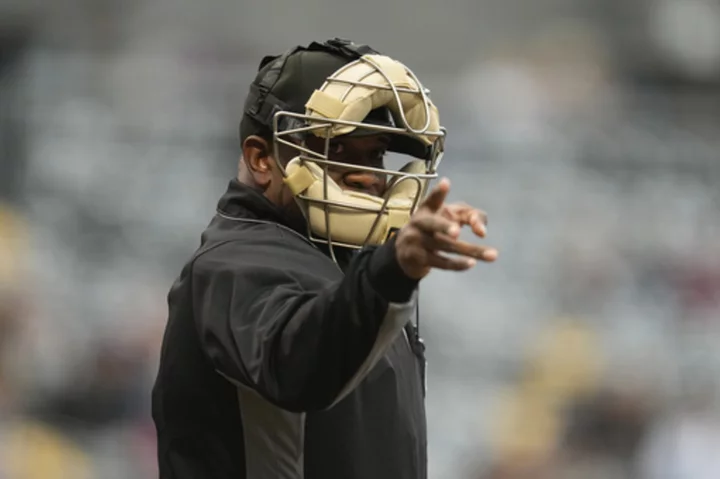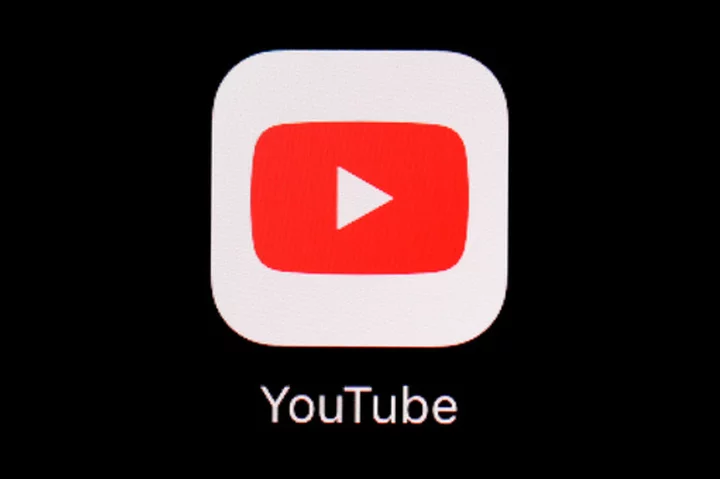
'Now, get over it!': Yuri Lowenthal is done talking about Peter Parker's facial changes
Yuri Lowenthal insists it wouldn't have mattered if he looked "like a goblin", his performance was "better".
2023-09-25 19:25

Robo umps reach Triple-A, but MLB rollout still uncertain
Automatic balls and strikes could soon be coming to the major leagues
2023-05-09 22:55

When is 100 Thieves' Project X Coming to Fortnite Creative?
100 Thieves' Project X is coming to Fortnite Creative on July 11. The game was developed in UEFN and will be a 3v3 bank heist.
2023-07-08 01:26

YouTube sends gun videos to 9-year-olds: 'It's not the kids. It's the algorithms,’ study finds
YouTube is great at sending users videos that it thinks they'll like based on their interests
2023-05-17 03:24

Google Veteran Steps Down as Manager in Cloud Shakeup
One of Google’s earliest employees will step back from an executive management role, having held a senior position
2023-07-12 16:25

WNBA and AI: How artificial intelligence is improving the fan experience
GameOn Technology recently partnered with the Chicago Sky, bringing AI to the Sky's website. The Sky are the third WNBA team to partner with GameOn. What should fans expect from this trend?If you go over to the Chicago Sky's homepage, one of the first things you'll see is a chat b...
2023-06-09 05:50

GameStop terminates Matt Furlong as CEO
(Reuters) -GameStop said on Wednesday Matt Furlong has been terminated as CEO and the board has appointed billionaire Ryan Cohen
2023-06-08 04:26

US House Republicans raise 'deep concern' on TikTok content decisions
By David Shepardson WASHINGTON (Reuters) -The chair of a U.S. House of Representatives committee on China's Communist Party and other
2023-05-12 03:16

Canon imagePrograf TC-20M Review
The Canon imagePrograf TC-20M ($995) is the first under-$1,000 24-inch wide-format printer with a built-in
2023-06-25 10:52

23 of the funniest blue couch memes
Social media can be a nasty place at times, but every now and then a trend comes along which reminds you just how fun it can be. The most recent is the blue couch, which has been the talk of Twitter for the past week or so. In case you missed it, influencer Amanda Joy got a lot of people talking recently after finding a couch abandoned on the streets of New York. After doing a little research and believing it to be the $8,000 ‘Bubble’ couch from French brand Roche Bobois, she decided to take it back to her apartment and clean it up. Sign up to our free Indy100 weekly newsletter Joy’s dad picked up the couch in his van and Joy filmed the entire process of brightening up the sofa and moving it to her living room. The TikTok now has over 40 million views, and over 4 million likes – but not everyone thought it was a good idea to take the couch off the sidewalk. Some believed the unique-looking piece wasn’t the real deal and instead claimed it was a knockoff. Others were concerned about possible bed bugs and roach infestations, with no sign of how long the couch had been on the street. In the days that followed it continued to raise eyebrows across the internet, and these are some of the biggest reactions and memes. Have your say in our news democracy. Click the upvote icon at the top of the page to help raise this article through the indy100 rankings.
2023-05-24 18:27

Vampire Survivors Cherry Bomb: How to Evolve
Cherry Bomb can be even better when you upgrade it to Yatta Daikarin. Here's how to do that.
2023-08-24 02:57

Are xQc and Fran engaged? Fans speculate after ring from Twitch streamer’s Insta story spotted in rumored GF’s photo
xQc’s Instagram story shows him cuddling a woman who is wearing a large diamond ring which matched with one in Fran’s selfie
2023-06-12 12:46
You Might Like...

Facebook and Instagram have officially started blocking news in Canada

No ‘smoking gun’ linking mental health harm and the internet – study

IShowSpeed gets ambushed by Premier League Stars on Fortnite, including Harvey Barnes: 'F**k you'

itel Launches Color-changing New Smartphone S23, Takes Users to New Heights

Crypto’s Dream of an Embrace by China Gets a Reality Check

SEC says crypto firm Binance mishandled funds, violated securities laws

Binance to sell Russia business for undisclosed amount

What is Elon Musk’s ‘everything app’ X?
